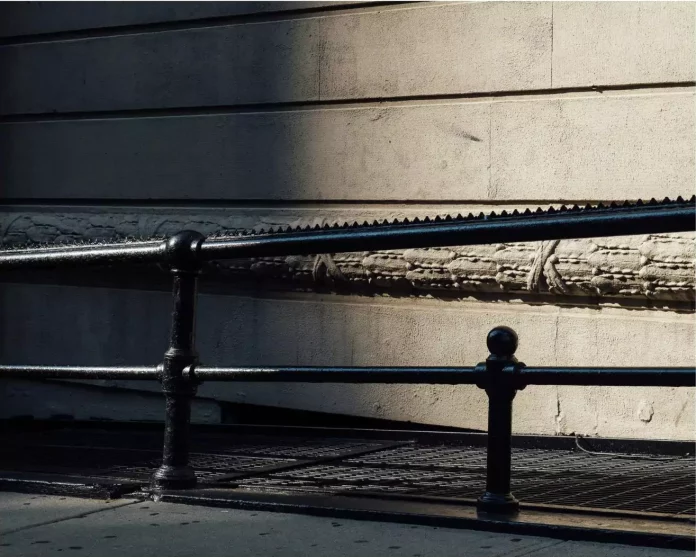
As people navigate urban landscapes, some designs subtly render spaces undesirable and uncomfortable, thus influencing our behaviors and choices. These silent agents shape how we perceive and interact with the city, often unnoticed yet deeply impactful. One such approach is hostile architecture, which is intentionally crafted to deter unwanted behaviors—often at the expense of inclusivity and accessibility—under the guise of crime prevention.
What is Hostile Architecture?
Hostile Architecture, also known as “Exclusionary architecture” or “Defensive architecture”, is a design strategy prominently used in urban environments. Its primary purpose is to control and modify public behavior by limiting how objects and spaces can be used.
This approach, while seemingly modern, has roots that stretch back to ancient times. Medieval fortresses, for instance, were equipped with spikes, ditches and drawbridges, all designed to deter potential enemy attacks.

The term “hostile architecture” gained significant traction in the 20th century, as cities began to adopt design features aimed at curbing crime and addressing social and economic challenges. From park benches with armrests that prevent lying down to sloped surfaces that discourage loitering, these design choices have sparked a broader conversation about the role of public spaces and who they serve.

A Closer look at Hostile Architecture
Camden Benches (London, UK)
In 2012, Camden Borough Council installed a 2-tonne concrete bench designed to inhibit criminal and antisocial behavior. The sloped, ridged surface prevents prolonged occupancy, while the solid, crevice-free structure hinders illicit activities. Additionally, the bench’s material and design facilitate easy maintenance by allowing water to run off efficiently.


Sidewalk Boulders (San Francisco, USA)
In San Francisco, sidewalk boulders became a prominent example of hostile architecture. Large rocks were strategically placed along sidewalks to prevent homeless encampments and discourage illicit activities. These boulders originated in the Clinton Park street neighborhood, where residents, frustrated by ongoing safety concerns and a lack of response from authorities, took matters into their own hands to address the issues they were facing at night.

Anti-Loitering Spikes (Mumbai, India)
Inspired by medieval fortresses, HDFC Bank in Mumbai installed a metal spike mat in front of their main entrance. The goal was to reduce loitering and encampments at night. However, the design, intended to deter crime, raised concerns about potential harm to children, the elderly, or disabled individuals.

Pay & Sit Benched (Shandong, China)
An artistic protest against commercialized public spaces led to the creation of hostile benches. These are equipped with spikes that rise from the seat after the paid time expires. Ouch!

Concrete Teeth (Guangzhou, China)
The Huangshi Highway is lined with concrete spikes to prevent encroachment and encampments by homeless people. This hostile design has faced significant backlash for rendering the space unusable.

Obstructed Spaces (France)
France, known for its artistic heritage, has also incorporated materials and shapes throughout its urban landscape that, while seen as art by some, are hostile for many. The frontages of houses are often marked by metal spikes, building corners by stone bollards, and metal bars. Exhaust vents of the subway, once used by the homeless for warmth in winter, are now topped with metal exhibits, designed primarily to prevent people from sleeping there under the guise of aesthetics.


Leaning Bars and Sectioned Benches (New York, USA)
Leaning bars and sectioned benches have been introduced in transit-oriented spaces. Sectioned benches, equipped with metal armrests, were designed to prevent homeless individuals from occupying them for extended periods. While this design met its goal of discouraging people from sleeping on the benches, it also reduced seating capacity. Leaning bars, intended to assist those with difficulty bending their knees, have faced criticism from locals due to the discomfort they cause for most users.


Beyond Function- The Impact of Hostile Architecture

Design against crime has become prevalent in many developing cities, aiming to maintain order, ensure safety, and curb behaviors like loitering, sleeping, and skateboarding. However, these designs have faced backlash from communities, particularly for features like “anti-homeless spikes,” which target those with no other place to go. Hostile architecture not only creates physical barriers but also deepens societal divides by reinforcing exclusion.
City design choices significantly impact city residents, making it crucial to strike the right balance. Authorities and designers can adopt a more human-centered approach by incorporating inclusive elements that also address safety concerns. For instance, focusing on transit areas and providing sleeping capsules or safe shelters for the homeless could enhance inclusivity without compromising safety. Hostile architecture, though prevalent, should not be viewed as a permanent solution to urban challenges—it’s a temporary fix that can alienate the very people public spaces are meant to serve.
The broader implications of hostile architecture reflect the need for cities worldwide to rethink their urban design strategies. By adopting more inclusive and thoughtful designs, cities can balance security with compassion, ensuring that public spaces remain accessible to all.
References
- https://youtu.be/ttcI9h4F7eU?si=y2Dsa5LiUTtsjvjM
- https://ndc-md.org/news-and-stories/understanding-hostile-architecture-the-cause-and-effect-of-restricting
- https://www.nytimes.com/2019/11/08/nyregion/hostile-architecture-nyc.html
- https://www.theurbanist.org/2023/12/11/urbanism-101-hostile-architecture/
- https://www.re-thinkingthefuture.com/designing-for-typologies/hostile-architecture-anti-homeless-architecture/
- https://www.bbc.com/future/article/20131202-dirty-tricks-of-city-design
- https://iamabadinfluence-r.com/blog/the-camden-bench-amp-hostile-architecture
- https://dublin.sciencegallery.com/design-and-violence/camden-bench
- https://www.youtube.com/watch?v=AnqUoAEg6f4
- https://a-id.org/the-growth-of-hostile-architecture-how-developments-in-urban-design-are-exacerbating-social-injustice/
- https://www.theepochtimes.com/bright/defensive-architecture-designing-the-homeless-out-of-our-cities
